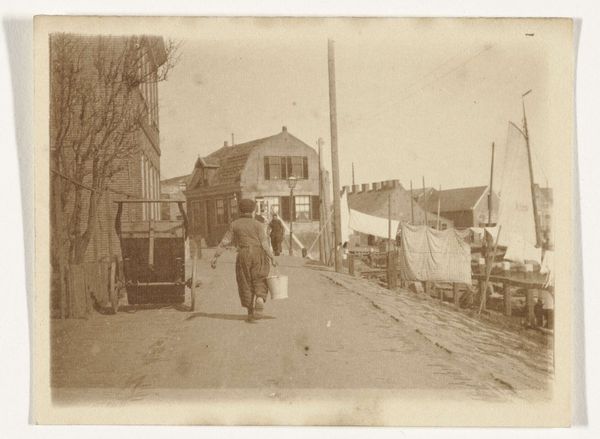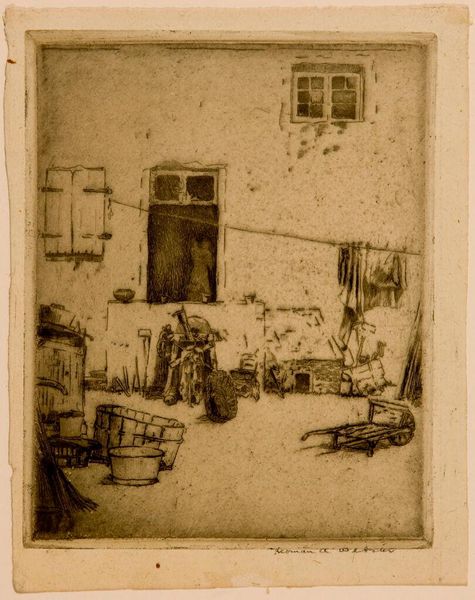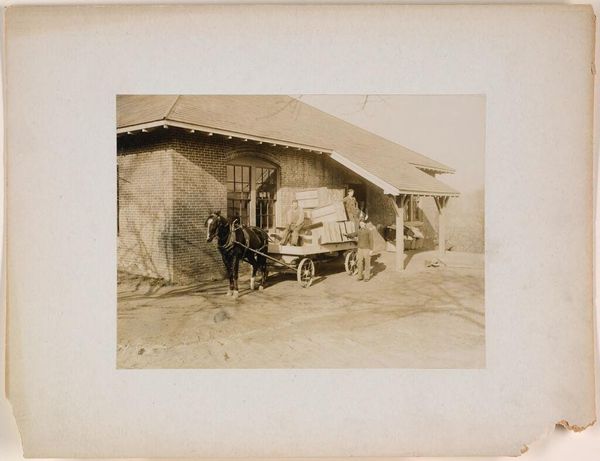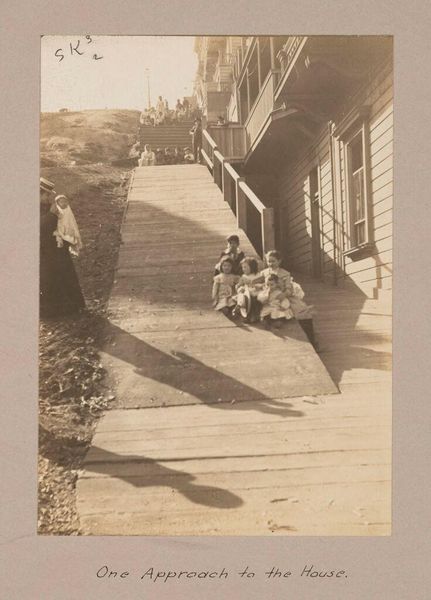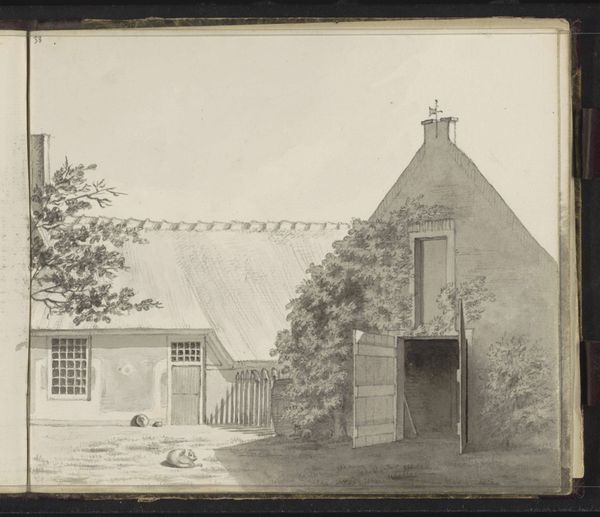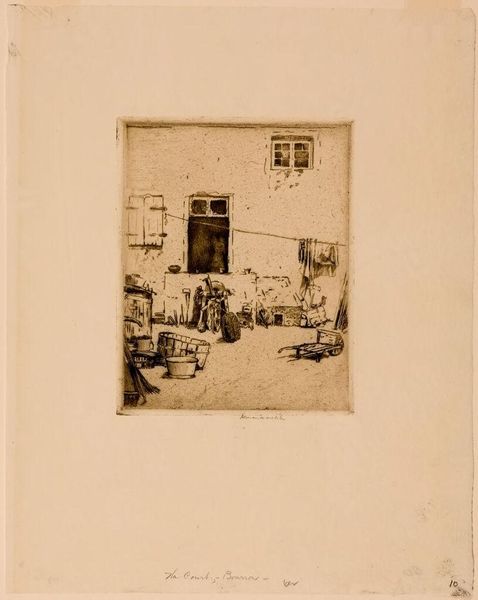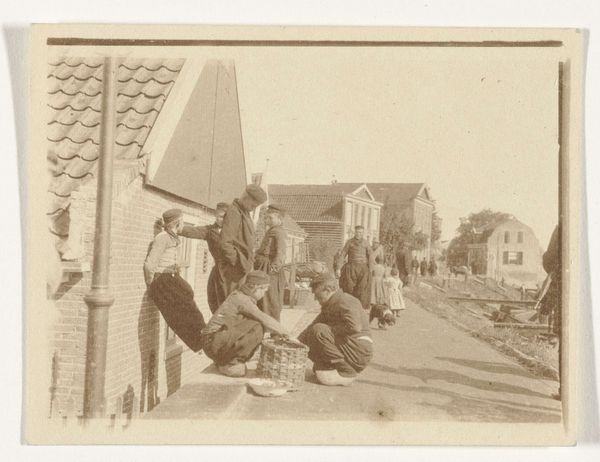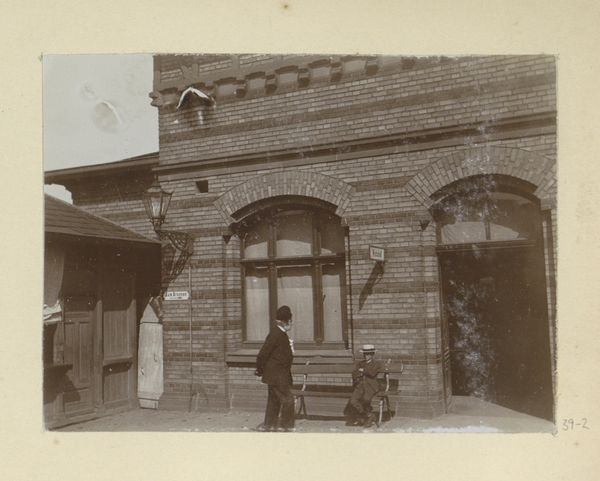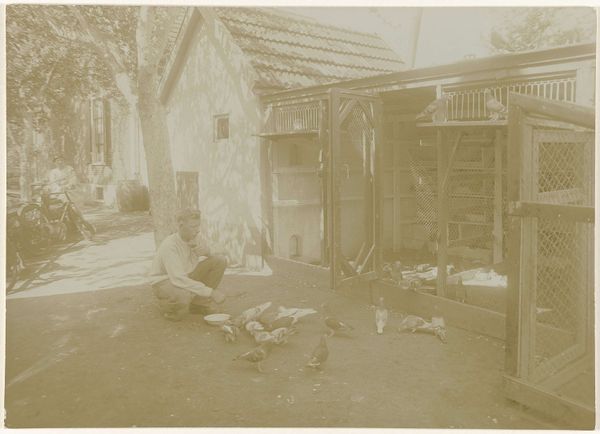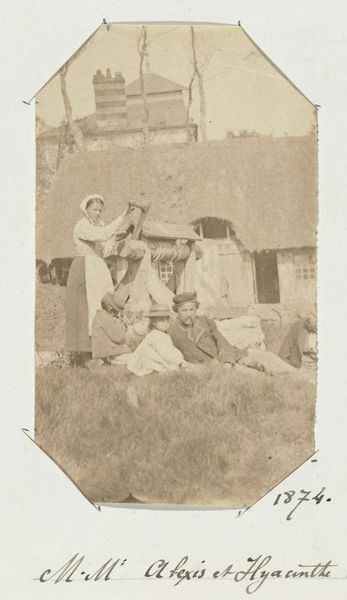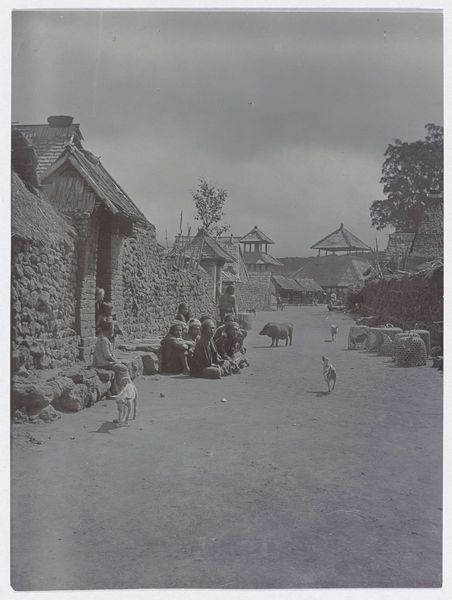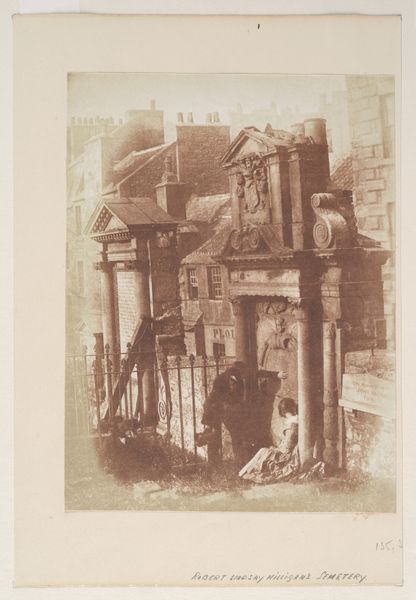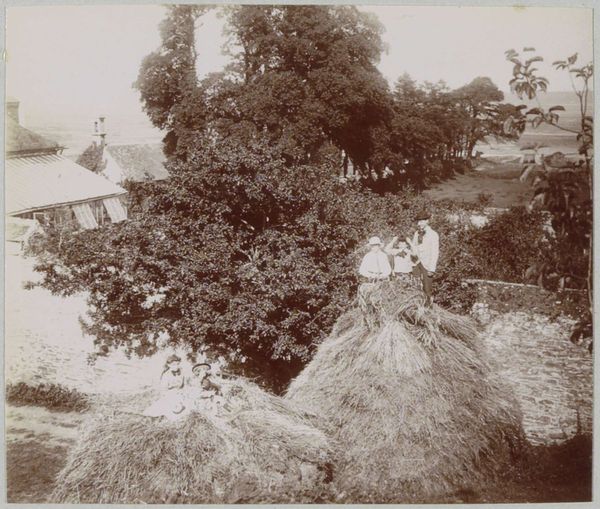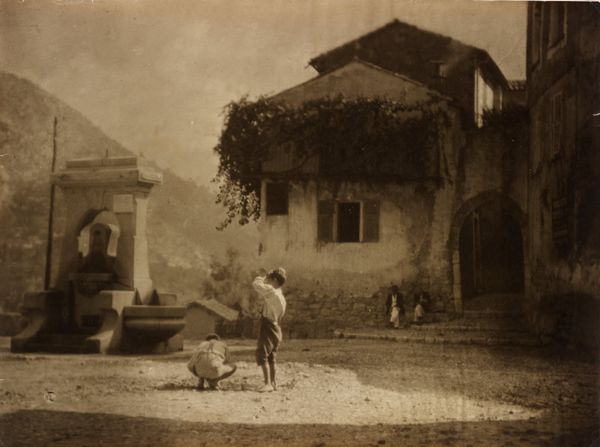
photography
#
portrait
#
photography
#
cityscape
Dimensions: height 76 mm, width 100 mm
Copyright: Rijks Museum: Open Domain
Editor: This is a photograph titled "Onbekende man in klederdracht voor een woning in Volendam," taken sometime between 1900 and 1910 by G. Hidderley. It's a muted, sepia-toned image of a person in traditional Volendam attire standing near a building. I'm immediately struck by the seemingly mundane setting contrasting with the staged, almost performative aspect of documenting traditional dress. How do you interpret this snapshot? Curator: I see this image as deeply embedded in the visual politics of the early 20th century. Photography like this was instrumental in constructing ideas of Dutch identity, often marketed to tourists and consumed as a romanticized vision of traditional life. What's crucial here is the power dynamic inherent in the gaze: who is taking the photograph, and for what purpose? The subject is presented almost as an artifact for the viewer's consumption. Editor: So, it's less about authentically capturing life and more about creating a consumable image of Dutchness? Curator: Precisely. Volendam, with its distinctive clothing, became a popular subject for these images. Think about how museums at the time also displayed artifacts to define national identity. These photographs were circulated widely, both shaping and solidifying a specific, carefully curated vision of Dutch culture. This photo becomes less about one man and more about representing a people. Does the seemingly candid nature make it feel more "real?" Does the artist take responsibility for exploiting this community and culture for revenue? Editor: That’s a really interesting point. It definitely gives me a lot to think about in terms of how we frame representations of culture. Thank you! Curator: Indeed. And understanding that historical context challenges us to critically examine similar representations today. It's never just a picture; it's always part of a broader social and political conversation.
Comments
No comments
Be the first to comment and join the conversation on the ultimate creative platform.
